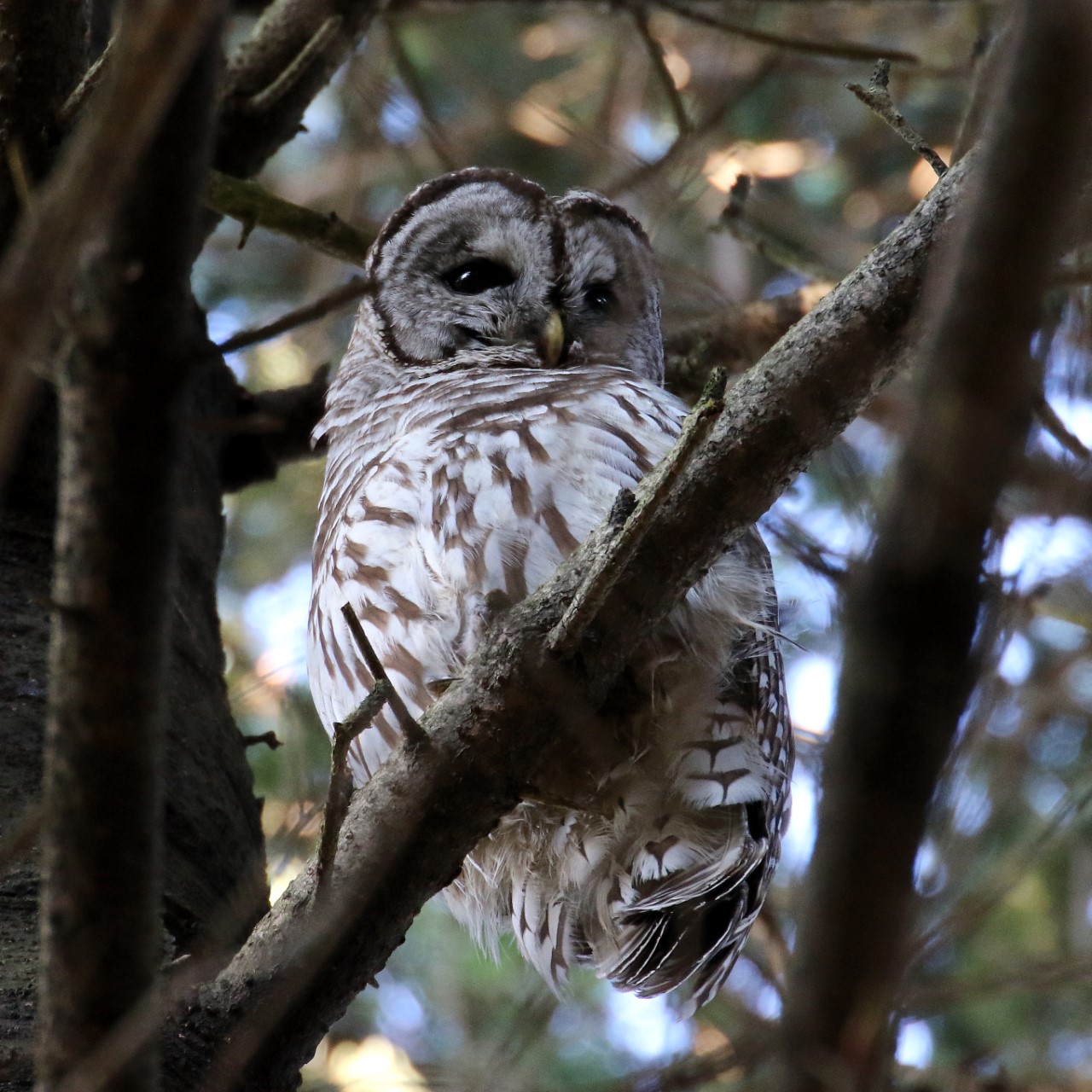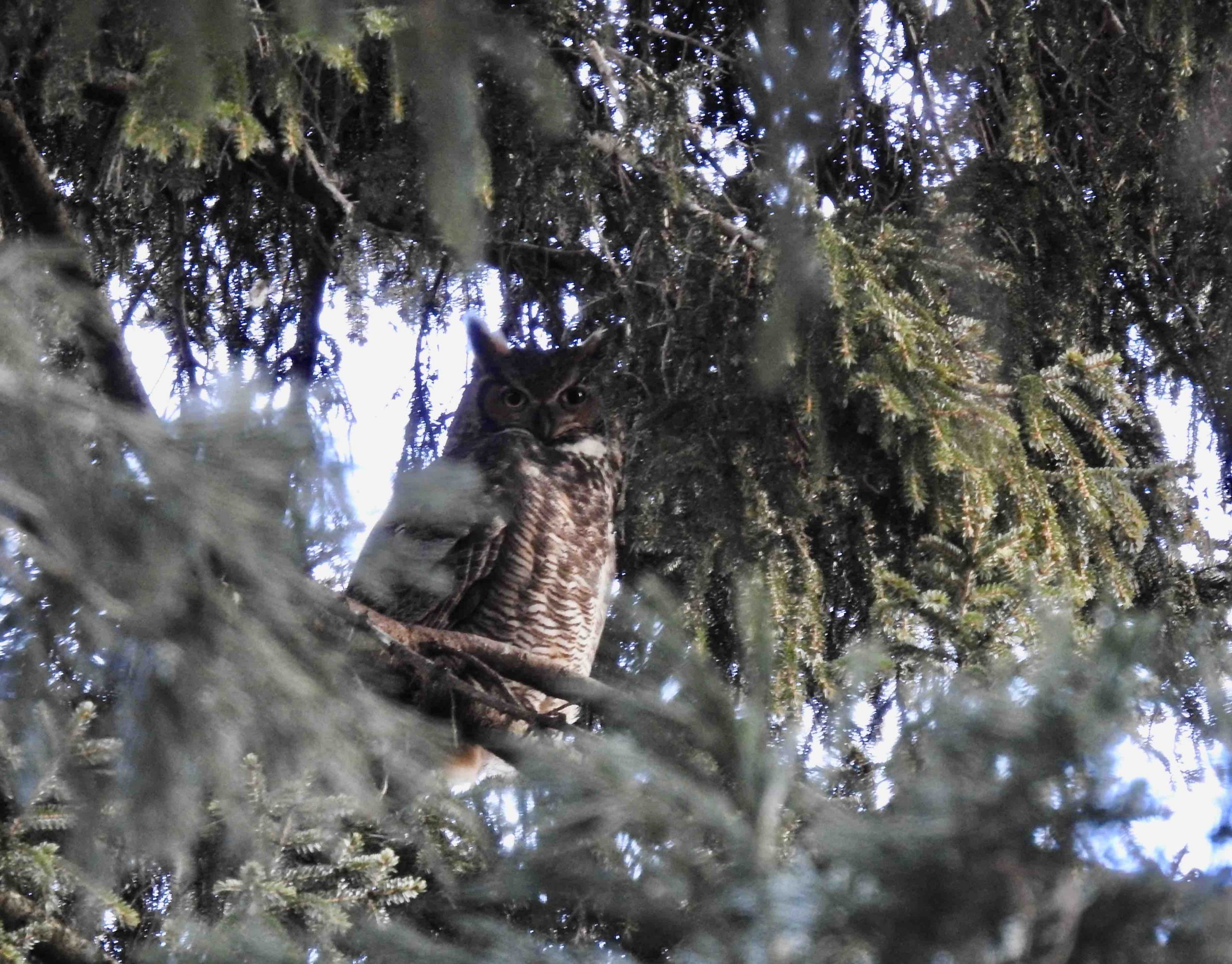Although the winter evenings may be cold, there are few better times to look for owls in the Arboretum landscape. For example, at this time of year, attentive visitors may hear great horned owls calling as the light begins to dim and those with keen eyes (and some luck) may even observe a few silently flying among the trees. While owls as a whole may seem mysterious and rare, the reality is that visitors sometimes walk beneath these interesting birds without even noticing.
One of the most common owls in Boston’s urban parks (and by extension, likely the most common species in the Arboretum) is the diminutive Eastern screech owl. This small bird weighs only as much as a half-full can of soda and is about the size of a robin. However, their size belies a mighty appetite. Screech owls prey on insects, small reptiles, amphibians, rodents, small birds, and even fish. At the Arboretum, one charismatic individual used to be reliably spotted in small cavity along Meadow Road (alas, it has not been seen there for several years). They have more recently been seen and heard in the North Woods and on Hemlock Hill. Despite their common name, the screech owl’s call is more like a haunting, high pitched whinny.

Barred owls are less common than screeches, but their numbers in southern New England seem to be increasing. This could be because barred owls prefer to roost and nest in old growth forests, especially among mature conifers such as hemlocks. However, since more of Massachusetts’ historic farmlands are regrowing as forests, more habitat may be becoming available. Predictably, this species sometimes roosts in large, old trees in the conifer collection and on Hemlock Hill. When males and females call to each other during the mating season, the resulting cacophony is often compared to a group of grunting, howling monkeys. A more culinary interpretation, though, is that they are saying “Who cooks for you? Who cooks for you all?” Barred owls eat squirrels, chipmunks, and small rodents, as well as small birds, amphibians, and reptiles.

Great horned owls are the Arboretum’s largest and most formidable owl species. Apex predators, these owls consume anything that they can catch. Their diet includes small raccoons, skunks, rabbits, squirrels, mice, geese, ducks, crows, songbirds, and even other raptors (such as peregrine falcons). They even eat the other owls on this list, when presented the opportunity. During the winter, mating pairs of great horned owls can be heard “dueting” in the landscape; the male’s call is a deep “hoo-h’hoo-hoo-hoo” while the female’s response is a slightly higher pitched version. The two of them defend a large nesting territory and usually no more than one pair roosts or nests in the Arboretum per season.
The last (and the least in evidence) species to mention is the Northern saw-whet owl, which are even more diminutive than the screeches. While saw-whet owls have never been confirmed at the Arboretum, they could paradoxically be one of the most populous species. The reason for this conundrum is that saw-whets are strictly nocturnal, seldom vocalize, expertly hide in coniferous vegetation during the day, and thus avoid most forms of ornithological surveying. In the daytime they prefer to roost between 6-8 feet off the ground in young conifers, making their ability to avoid observation even more frustrating! However, mist netting programs (such as those conducted by Mass Audubon) reveal that saw-whets may actually be Massachusetts’ most abundant owl species, particularly when northern populations move south each fall. Since these tiny birds are occasionally seen in downtown Boston and are abundant in the nearby Blue Hills, it stands to reason that at least a few must be successfully hiding away at the Arboretum.

If this list of interesting birds inspires you to go “owling” this season, please remember to do so responsibly. Each of these species relies on camouflage to avoid detection during the day and so will remain still even if you get close; they will not fly from their hidden roosts unless they feel extremely threatened. Unfortunately, some people mistake this stillness as an invitation to take a closer look. However, the owl will likely be quite scared, and your curiosity may increase its sense of danger. So please remember to keep your distance, limit your observation time to a few minutes, and avoid attracting attention. That said, owling is a great excuse for wandering the collections on cold winter afternoons. So come out for a walk! Whooooo knows what you might find?